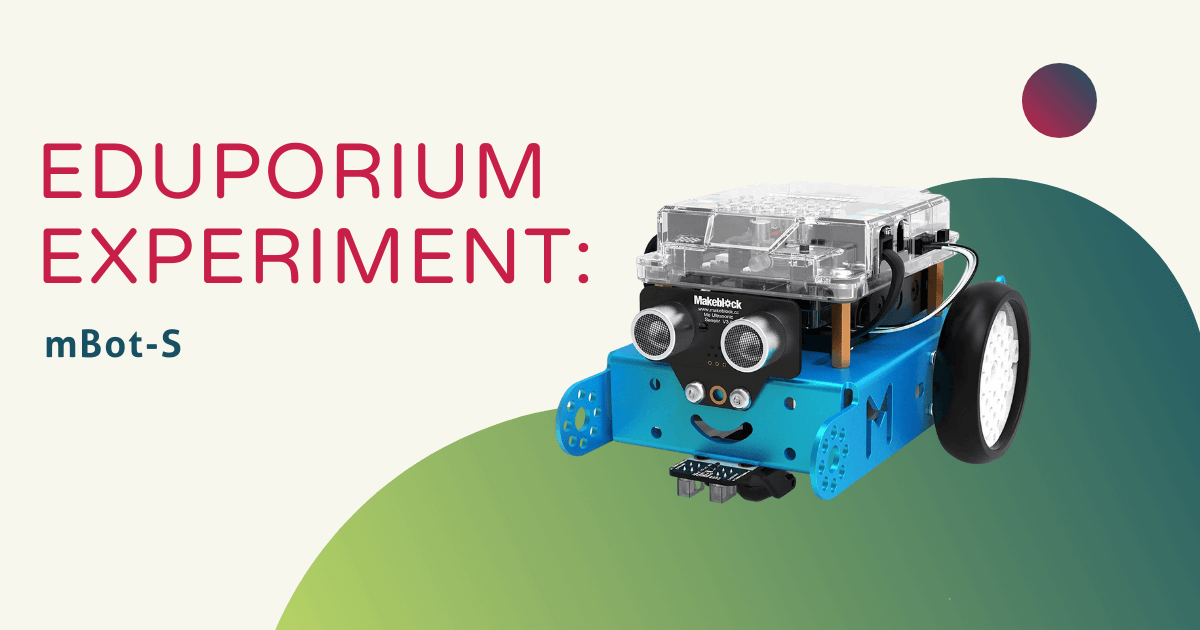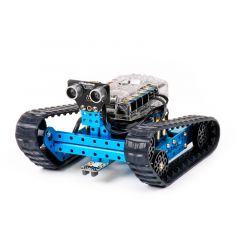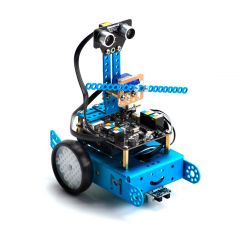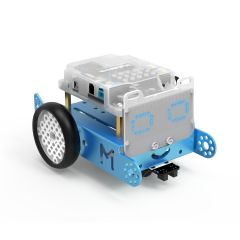Integrating coding and robotics in the classroom is always a popular and effective approach to offering all K-12 students a real-world STEAM education. It truly doesn’t matter how old students are or what types of experiences they have had with programming in the past because there are various entry-level solutions to help ease kids into developing key coding skills. One option is the mBot-S, a Scratch coding robot that's engineerable and programmable for elementary, middle, or high school students. As the students progress through exploring with their mBot-S, they’ll learn some fundamental skills from these robotics and coding experiences. So, how can educators go about teaching with it?
The mBot-S is the latest version of the mBot, following the original mBot models and joining some different Makeblock robots. These include the mBot Ranger, mBot Ultimate, and the mTiny among some other older models. Using their mBot-S, students get to experience multiple facets of STEAM learning, including, most notably, engineering and coding. The mBot-S arrives disassembled, but it is super easy and also rewarding for students to put together. Step-by-step instructions come in the box and all they need, in addition to the robot’s parts, is a screwdriver. This hands-on element engages them from the start and helps expose them to the hardware and electronics inside the bot.
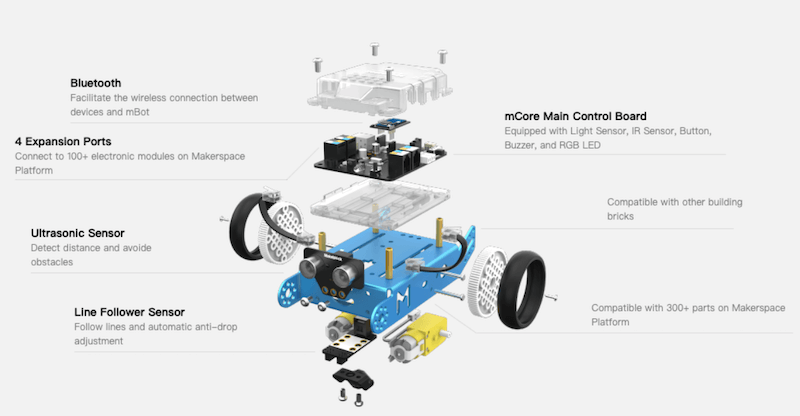
The main difference between the mBot-S and previous models is the on-board LED matrix that comes with this latest version. Using Makeblock’s various applications and their programming skills, students can write code that displays unique messages on the matrix! It's simple enough for children as young as eight to use by animating customizable images and programming some LEDs. And, your mBot-S is a great introductory robotics tool for elementary kids since they can program with visual blocks.
The mBot-S is programmable with the mBlock Blockly, Makeblock, and mBlock apps. The mBlock Blockly and Makeblock apps work on iOS and Android devices while the mBlock app is a desktop environment for Windows and macOS devices. Their mBlock platform is completely block-based, the Makeblock app is an all-in-one robot controller, and the mBlock Blockly app is a game-based coding app. To get the best mBot programming experiences, especially for new coders, it's ideal to utilize one of three pre-set modes. These include obstacle avoidance mode, line follower mode, and manual control mode. In its obstacle avoidance mode, the mBot will navigate around any obstacles within its path. In line follower mode, it will travel along lines on the ground. And, in manual control mode, students are able to control its movements in real time.
The Makeblock app is the best option for students new to the mBot-S to begin. The app helps them move through the robot’s various capabilities by playing and experimenting with the different controls. Within the Makeblock app, students can control their mBot-S with remote-control driving, voice control, or the “Draw and Run” function. It even includes the Makeblock Bluetooth Controller, which allows students to pair their device with an mBot and control its movements using 15 various buttons and two joysticks. As a beginner level option, this app helps younger kids build confidence when it comes to robotics and programming.
Then, we have the mBlock Blockly app, which helps to give students a gamified learning experience. As its name implies, mBlock Blocky involves block coding and students can simply drag and drop the blocks into programs. The robot will then respond to the commands and kids can complete various game-based tasks while learning new coding skills. Then, we have advanced programming with the mBot, which students can do with the mBlock app. This offers a similar experience to mBlock Blocky, but kids could also switch from block coding to text-based programming in the Arduino C language to continue building their CS skills.
As we mentioned and like other Makeblock robots, the mBot-S comes disassembled with the tools for kids to assemble it. Each of these electronic components is color coded to make it easy for students to connect to the appropriate pieces, and the building manual features very detailed, three-dimensional illustrations for kids to follow while they build. As a byproduct of building their robot, they'll also develop spatial awareness skills and familiarity with robotic parts and sensors. We’ve always thought this is a great way of giving them some engineering practice before getting into the programming side. And, it continues to be a great feature of Makeblock’s STEM solutions!
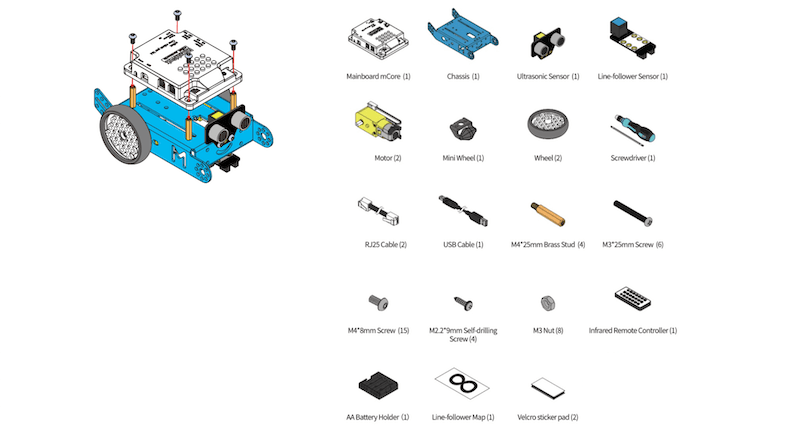
After constructing the mBot-S, which takes a little less than a half hour, children can progress on to the programming! I had my iPhone handy, so I decided to give the mBlock Blockly app a try rather than the Makeblock app with the intention of saving the desktop mBlock version for another time. To get started, students can simply select the mBot option when this app opens and then select the first challenge (the only one that’s unlocked when they first get started), which is called ‘Sequence.’ Their app shows some basic instructions and reminds the user to make sure their mBot is connected (via Bluetooth). Then, you can access the programming field and all the different blocks for building the programs.
Creating programs within the Blockly app is similar to using other Blockly programs and it's as simple as connecting the robot and connecting different blocks by dragging them together. As soon as I'd made this program that was about eight blocks long, I figured that was a good start. So, I tapped the play button and the bot ran the program pretty much exactly how I had hoped. It was real smooth for a robot that I wouldn’t hesitate to describe as bulky and this is great to know for teachers who are using it in their classroom. And, some of the blocks in my program included those that told the mBot to begin moving when the play button was clicked, to light up different colors, and to briefly pause at one point.
There are also some various add-ons for the mBot available in our store to help make inventing and coding with the mBot-S more exciting and engaging for students, especially those who may have completed some of the initial challenges with ease. Using the add-ons, kids can design and complete various projects, like a dancing cat, head-shaking cat, light-emitting cat, and others. You can find the add-ons and accessories on our store by searching for ‘Makeblock.’
Though it is slightly challenging to build the mBot-S, the programming opportunities it provides for children are great! The mBlock Blockly app is very engaging and quite easy to navigate, allowing children to enjoy a hassle-free programming experience. To order the mBot-S, request a quote, or check out the other various Makeblock items, head to our store! And, be sure to follow us on both Twitter and Instagram for more on technology use in K-12 STEM learning!



